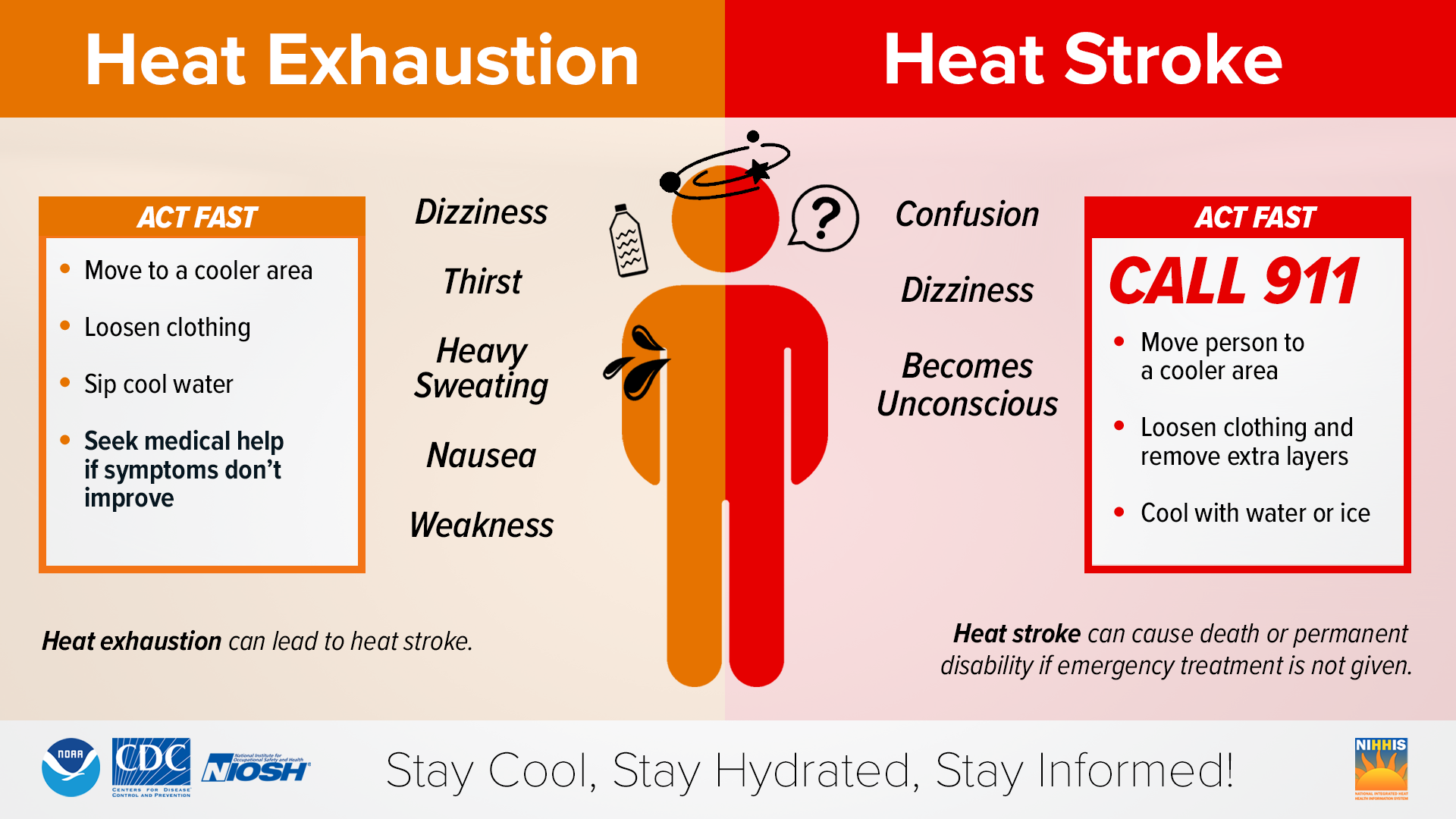(HealthyExaminer.com) – The summer months may call to mind sunshine, sea breezes, and family vacations, but you’ll need more than sunscreen to keep you safe when the temperatures start to rise. High temperatures might feel great when you’re poolside, but they can be difficult to enjoy when you’re mowing the lawn or working outdoors. Even a short walk can turn dangerous in a heatwave.
Preventative measures are key to avoiding both heat stroke and heat exhaustion. By recognizing the signs and taking preventative measures, you’ll know just what to do to stay safe this summer.
Signs of Heat Stroke
It’s important to recognize the signs of heat stroke even if you’re taking precautions to avoid it. According to the Center for Disease Control (CDC), symptoms include a throbbing headache, nausea, confusion, dizziness, rapid pulse, fainting, slurred speech, chills, a body temperature above 103 F, loss of consciousness, and skin that is hot, red, dry, or damp.
Heat stroke is considered a life-threatening medical emergency. Call 9-1-1 to get to a hospital immediately. If possible, get to an air-conditioned environment to wait for medical personnel. Use cool cloths or a cool bath to bring down your body temperature, but do not ingest any liquid.
Signs of Heat Exhaustion
Heat exhaustion is another risk when temperatures rise. The symptoms of heat exhaustion include heavy sweating, fatigue, nausea, confusion, dizziness, extreme weakness, clammy skin, muscle cramps, rapid breathing, an elevated body temperature, headache, and fainting.
Heat exhaustion is only considered life-threatening if you vomit, symptoms worsen, or your symptoms last longer than one hour. To treat heat exhaustion, move to a cool, ideally air-conditioned environment. Use cool cloths or a cool bath to bring down your body temperature. Sip water as long as you aren’t experiencing nausea or vomiting. Massage or apply pressure to cramping muscles.

How to Prevent Heat Exhaustion and Heat Stroke
Even though it’s important to know what to do if heat exhaustion or heat stroke symptoms occur, it’s even more important to avoid it in the first place. Prevention could save your life! The following recommendations can help keep you safe so that you can enjoy your summer.
- Stay hydrated by drinking plenty of water. Don’t wait until you’re thirsty to increase your water intake.
- Stay in air-conditioned environments when possible, particularly if you are a high-risk person such as a young child, elderly individual, or person with a chronic medical condition.
- Take frequent breaks while working or exercising in hot weather.
- Avoid leaving children or pets in hot cars. Even with cracked windows, rising temperatures can be deadly.
- Use SPF-15 or higher sunscreen on your skin to prevent sunburn, which can harm your body’s ability to dissipate heat.
- Wear a wide-brimmed hat to protect yourself from the sun.
- Wear lightweight and light-colored clothing.
- Make sure outdoor pets have access to shade and plenty of water.
- Stay informed by checking your local news for heat waves and other extreme temperature alerts.
By taking a few basic precautions, you can reduce your risk of a heat-related event. You’ll even know exactly what to do if you recognize heat stroke or heat exhaustion symptoms in a friend, colleague, or family member.
Copyright 2023, HealthyExaminer.com














